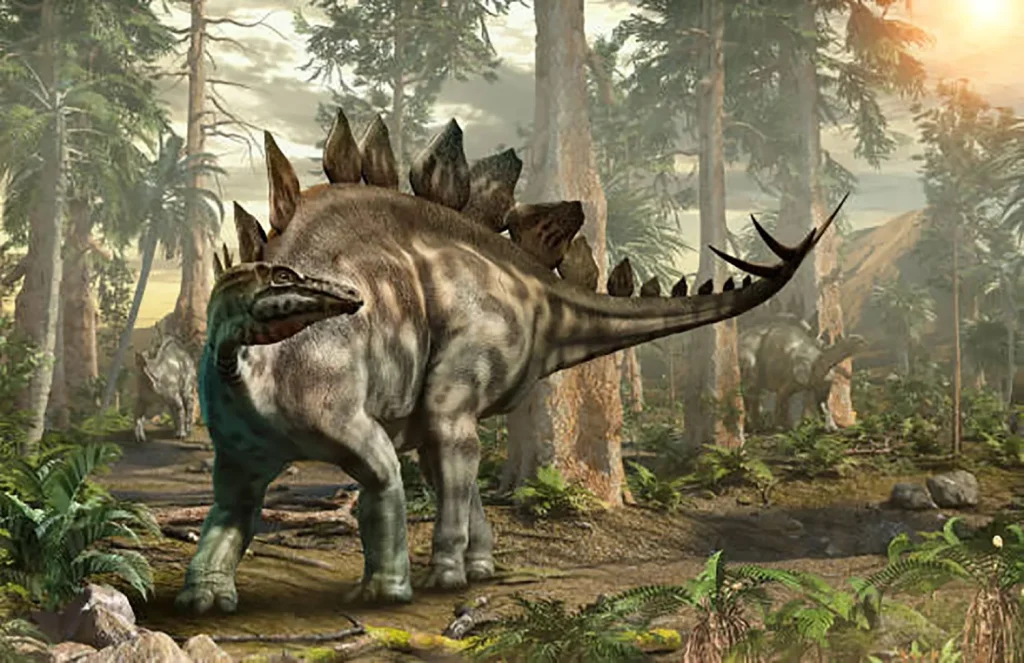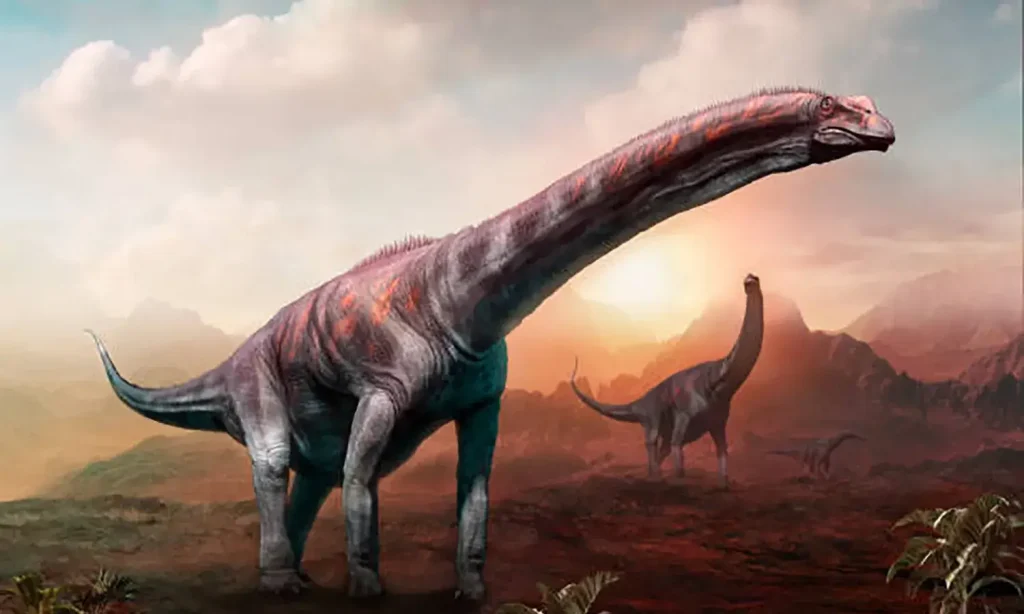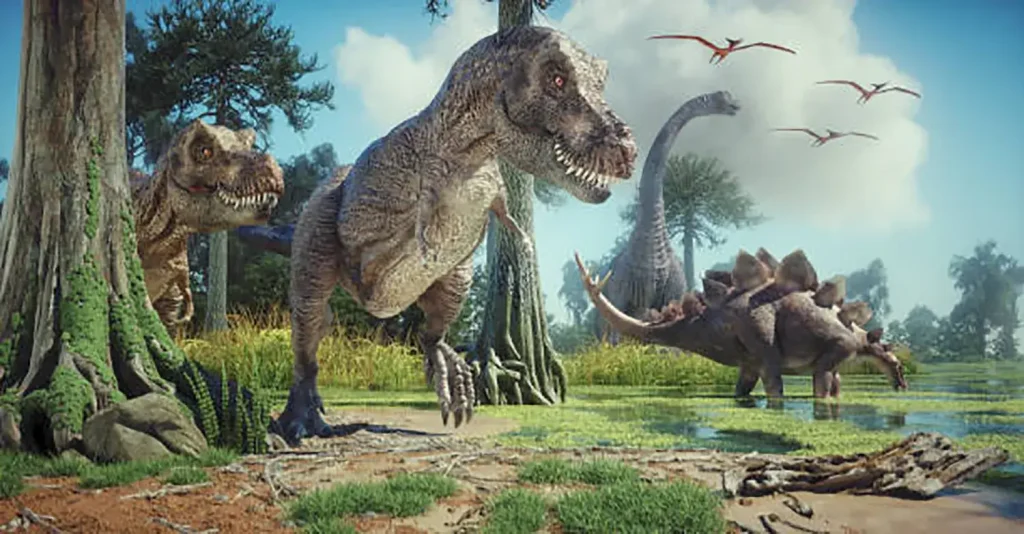The Shock of the “Fuzzy Dinosaur” Theory: The Forefront of Research on Avian Origins and Feather Evolution.
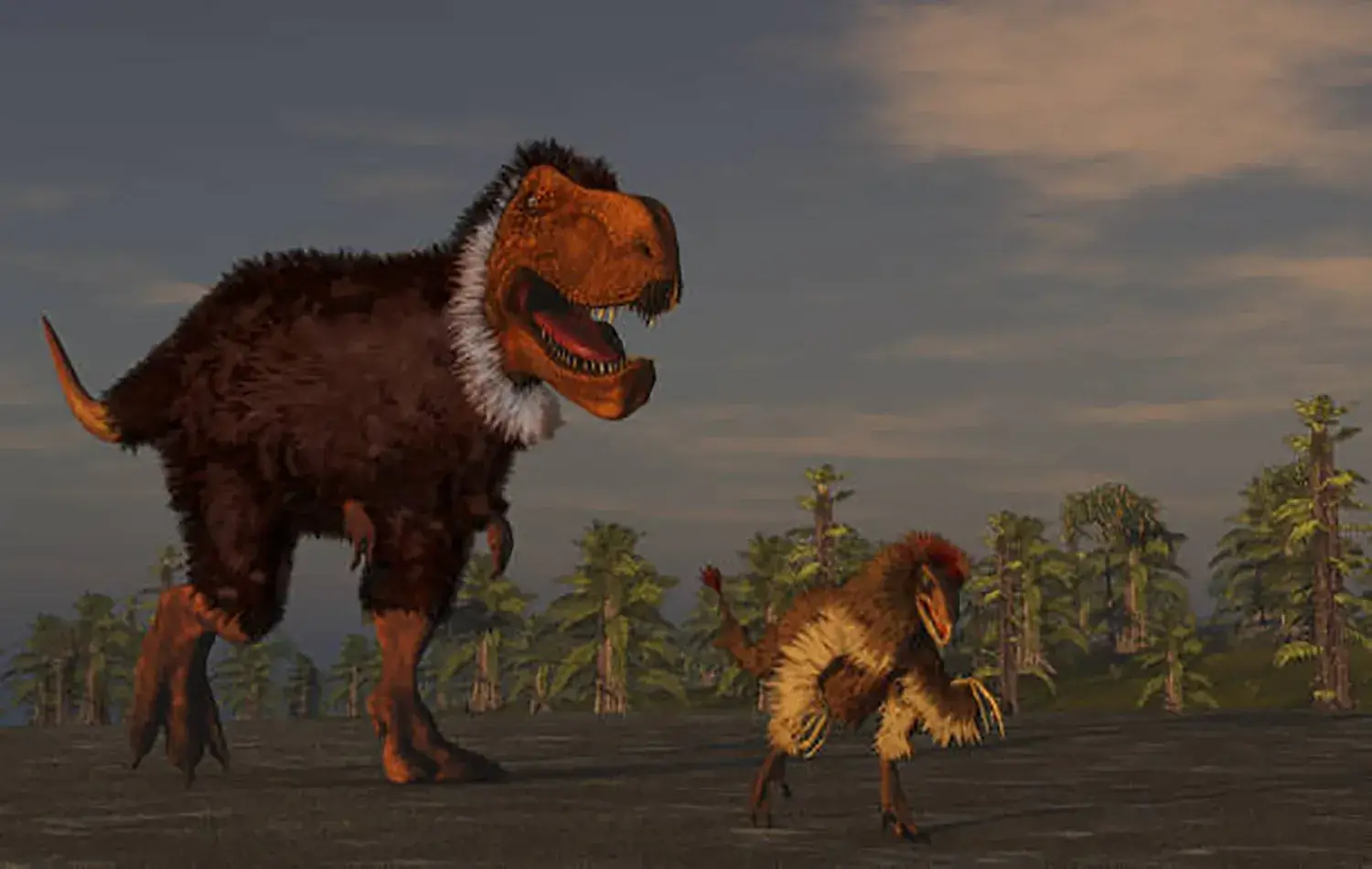
Feathered dinosaurs are those believed to have possessed the same quality of plumage as modern birds, belonging primarily to the Theropod group.
Their discovery firmly established the theory that “theropods are the ancestors of birds,” finally resolving the long-standing debate over the origin of birds.
These feathered dinosaurs are sometimes affectionately referred to as “fuzzy dinosaurs,” and their popularity is growing.
The Origin of Feathers Lies in “Insulation”
Feathered theropods are considered a specific group within the Saurischian lineage—one of the three major dinosaur groups—that evolved into birds.
The Role of Early Feathers Was Insulation
The reason why non-flying theropods had feathers is speculated to be due to the high insulating capacity of the plumage.
This provided a significant advantage over other cold-blooded animals by helping them maintain a constant body temperature, enabling them to be active regardless of the season or time of day.
Early feathers were simple, hair-like structures that evolved from the scales of lizards.
Fossils of some Oviraptorids have been found in an incubating posture, indicating that some species had the habit of warming their eggs.
Evolution to Flight
It is believed that these insulating feathers gradually evolved into more complex shapes and ultimately into the form seen in modern birds, where they are used for flight.
Maniraptorans, which chose to stay airborne for extended periods, evolved their feathers into flight feathers (remiges).
They also fused their collarbones to create a structure called the furcula (wishbone), which would eventually be repurposed as a spring to anchor the pectoral muscles necessary for flight.
The Shock of Consecutive Discoveries That Supported the “All Dinosaurs Were Feathered” Theory
Initially, feathered dinosaurs were thought to be confined to a portion of the theropods, but successive discoveries around the world—especially in China and Siberia—dramatically challenged this assumption, providing strong evidence for the possibility that “all dinosaurs had feathers.”
Definitive Evidence in Theropods
The “dinosaur origin of birds” theory was proposed in 1870 but was initially rejected due to the lack of feathered dinosaur fossils.
However, in 1996, a dinosaur fossil with feather traces was discovered for the first time in the layers of Liaoning Province, China, astonishing the world.
Sinosauropteryx
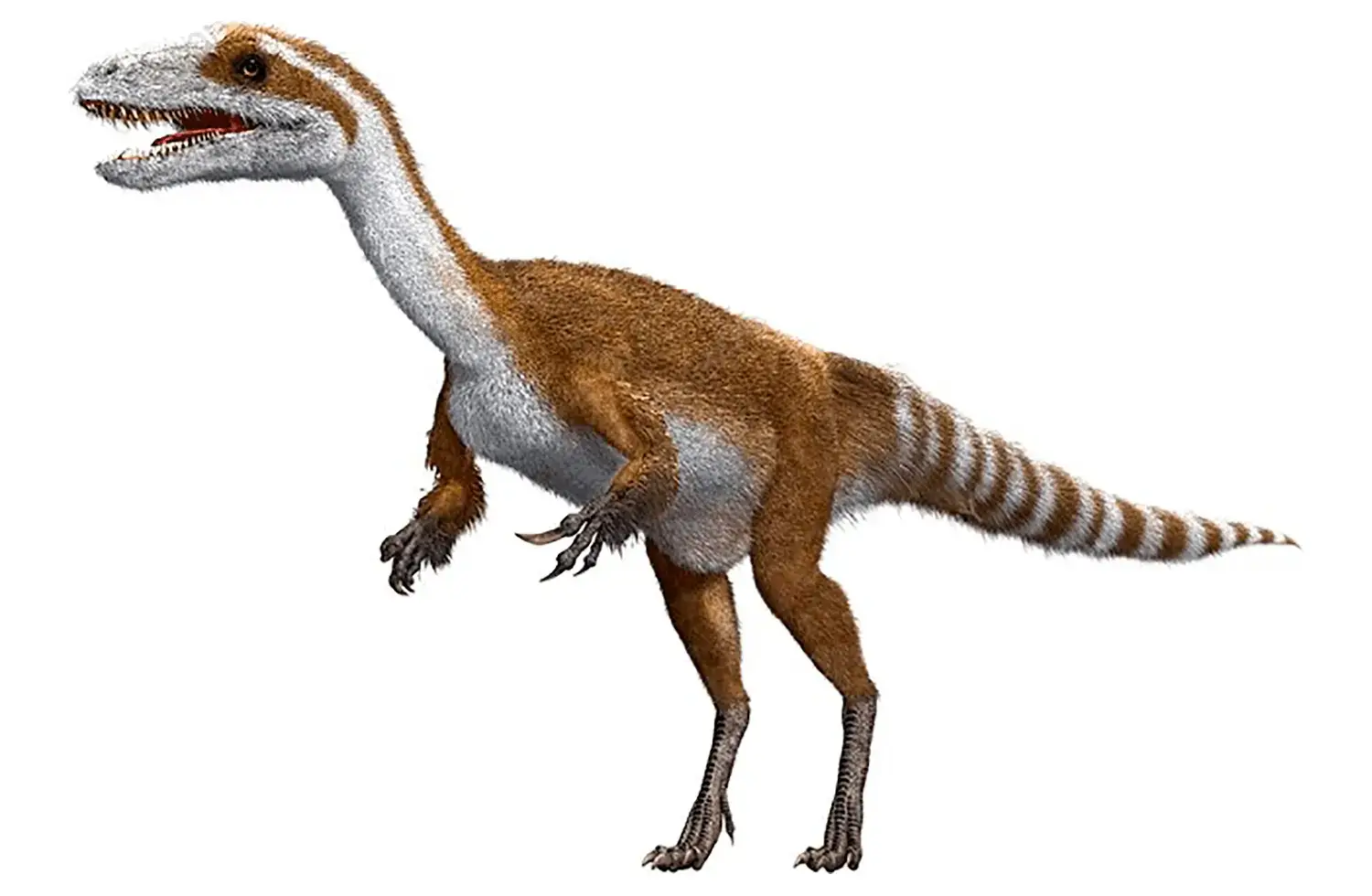
Sinosauropteryx
The first dinosaur discovered with traces of feathers, which clearly showed a filamentous, downy structure.
Color Analysis
In 2010, melanosomes—intracellular organelles containing melanin pigment—were found preserved in the feathers of Sinosauropteryx, revealing that it had reddish-orange feathers along its back and tail.
This suggests that, similar to modern birds, dinosaur feathers may have served a role in display for attracting mates or for intimidation.
Details on Sinosauropteryx here
Shocking Discovery in Ornithischians (Bird-Hipped Dinosaurs)
In addition to the theropod discoveries, the finding of feather traces in the Ornithischian group—a lineage separate from the one leading to birds—became the strongest evidence for the “All Dinosaurs Were Feathered” theory.
Discovery of Kulindadromeus (2014)
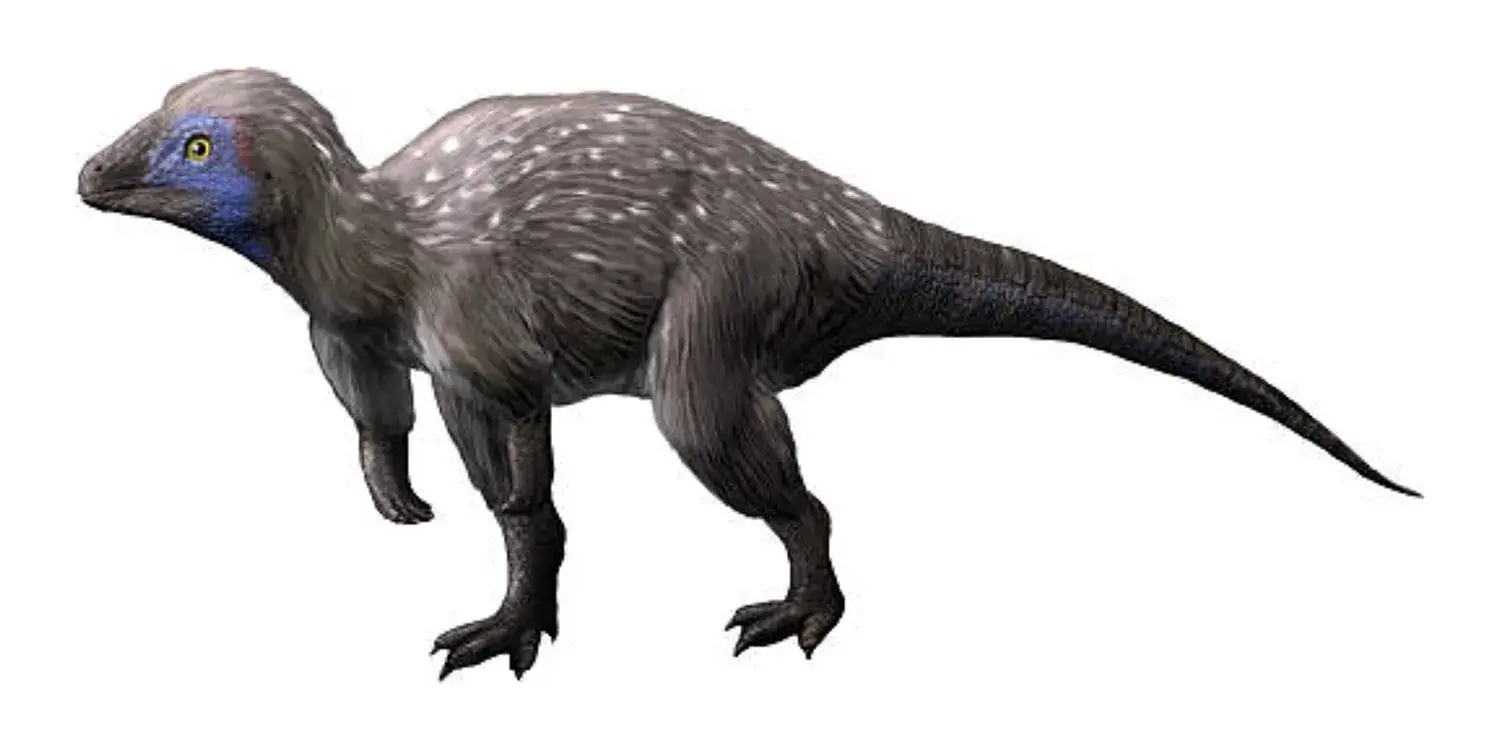
Kulindadromeus
This herbivorous dinosaur (Ornithischian), discovered in Siberia, was covered entirely in feathers.
This finding demonstrated that soft plumage was present in groups other than just theropods.
Details on Kulindadromeus here
Bristles of Psittacosaurus (2001)

Psittacosaurus
Hollow, quill-like tubular bristles—different from avian feathers—were found on the tail of Psittacosaurus.
Details on Psittacosaurus here
Regression to a Common Ancestor
These discoveries strongly support the idea that if the acquisition of feather tissue occurred only once in biological history, then dinosaurs must have acquired feathers before the divergence into the Saurischian and Ornithischian lineages.
Therefore, the theory that “the common ancestor of dinosaurs had feathers, and all dinosaurs possessed some form of plumage” is now considered the most likely hypothesis.
The Origin of Wings and the Connection to the Modern Day
Research on feathered dinosaurs has also led to the unraveling of the mystery of how birds acquired the ability to fly.
Ornithomimus Solved the Mystery of Wing Origin

Ornithomimus
Fossils of Ornithomimus discovered in Alberta, Canada, were the first feathered dinosaurs found in North America and greatly contributed to clarifying the origin of wings.
Changes Depending on Growth Stage
Studies of specimens ranging from juveniles to adults suggested that feathers initially covered the entire body, and as the animal matured, the feathers on the arms of the largest adults developed, potentially becoming the origin of the flight wing.
Modern Prosperity
Feathered theropods passed on their characteristics to modern birds.
Birds inherited not only bipedalism but also the feature of having hollow bones, which contributes to a lightweight skeleton.
With approximately 10,000 species, modern birds are more diverse and globally distributed than mammals, suggesting that the prosperity of the dinosaur lineage continues to this day.
The story of feathered dinosaurs teaches us about the resilience of life and the magnificent journey of evolution.
